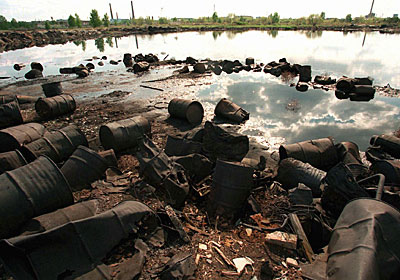The world's dirtiest city
Ukraine, Chernobyl
After the major event, Chernobyl became infamous for its nuclear contamination, with a radiation equivalent 100 times that of Hiroshima and Nagasaki combined. 135,000 people were evacuated, and an area within 19 miles of the accident site remains uninhabited. At that time, the city was undoubtedly rated as the dirtiest, unmatched by any other city.
Russia, Dzerzinsk
With a population of 300,000, Dzerzinsk is engaged in the dangerous production, storage, and disposal of chemical weapons and hazardous waste. Toxic chemicals in the groundwater have caused the mortality rate in this region to be 2.6 times higher than the birth rate.
Dominican Republic, Haina
Haina is known as the capital of toxins. A battery factory has led to extremely high levels of lead in the blood of local residents.
Zambia, Kabwe
Kabwe is Zambia's second-largest city with a population of 230,000. Due to uranium mining, it suffers from severe pollution, with children exposed to radioactive contamination levels 5-10 times higher than those stipulated by the EPA.
Peru, La Oroya
A smelting plant has exposed the residents of La Oroya to toxic radioactive dust for decades. Among the 35,000 children in the area, all have elevated levels of lead in their blood, with 100% being excessively polluted. Additionally, due to direct emissions of sulfur dioxide, plants in the surrounding areas have almost completely perished.
China, Linfen
Linfen is not the only polluted city in China, but it is one of the most severely affected. The low-grade coal mining industry in the area adds significant amounts of dust, sulfur dioxide, carbon monoxide, arsenic, lead, and nitrogen oxides to the city’s air.
Kyrgyzstan, Mailuu-Suu
Mailuu-Suu is a massive uranium processing center, storing 1.96 million cubic meters of radioactive tailings. The World Bank has implemented restrictive policies in this seismically active zone.
Russia, Norilsk
Pollutants include strontium-90, cesium-137, and small amounts of hydrogen sulfide. It remains the world's largest mixed-metal smelting site.
India, Ranipet
The pollution in Ranipet affects its 3 million residents, with sources traceable to the upstream city of Chennai. Local tanneries produce 1.5 million tons of toxic materials annually, although efforts are now underway to curb this.
Russia, Rudnaya Pristan
A heavily lead-polluted city. Now, with the factories closed, ecological restoration plans are underway.




